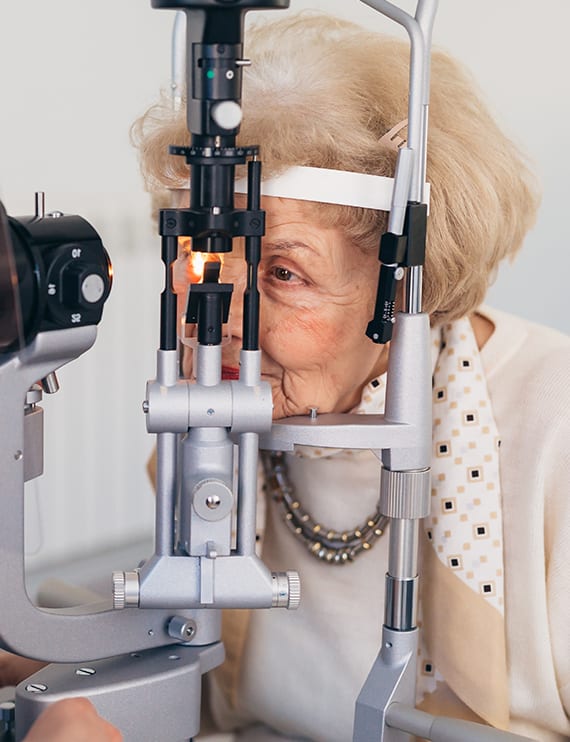
Addressing Glaucoma Through Routine Eye Care
Glaucoma is a progressive eye disease that causes damage to the optic nerve. At Parkview Optometry, we offer comprehensive eye exams to detect glaucoma early and act on potential vision-threatening issues.
Although those over 60 are at higher risk of developing glaucoma, it can occur at any age. Because many forms of glaucoma progress with no early symptoms, early detection is crucial for protecting your ocular health and vision.
In many cases, if glaucoma is caught and managed early enough, vision loss can be entirely prevented. Don’t wait to address glaucoma—schedule your appointment with us today.

Understanding Glaucoma
Glaucoma is a group of eye conditions that cause damage to your optic nerve, which is responsible for sending visual information to your brain. Damage to your optic nerve can lead to vision loss and blindness if not detected and treated early.
Although it’s usually associated with high intraocular pressure (IOP), there is a form of glaucoma that results even when IOP is within the normal range (normal-tension glaucoma).



Types of Glaucoma
There are several types of glaucoma, but the 2 main types are open-angle and angle-closure.
However, normal-tension glaucoma occurs even when intraocular pressure is within the normal range. Ocular nerve damage still happens, and medical professionals think it could be due to reduced oxygen supply to the optic nerve.
Open-angle glaucoma (also known as primary or chronic) is the most common form of glaucoma. It occurs when the fluid in your eyes (the aqueous humour) can’t drain properly, causing your eye’s internal pressure to rise slowly. This form of glaucoma progresses gradually and will require life-long management.
This condition rarely exhibits symptoms in its early stages, so many patients may not realize something is wrong until they have already experienced vision loss or even blindness.
This form of glaucoma occurs as the result of an injury, surgery, infection or tumour in or around the eye that causes an increase in eye pressure. It may also be the result of certain medical conditions, medications and eye abnormalities.
Angle-closure glaucoma (also known as acute or narrow-angle) is a rare form of glaucoma that develops suddenly and painfully. It occurs when the iris expands outwards and blocks the drainage canals (the angle between the cornea and the iris), resulting in a sudden increase in IOP.
Symptoms of angle-closure glaucoma are very noticeable, and damage occurs quickly. Symptoms include:
- Blurred or hazy vision
- Rainbow halos around bright lights
- Severe eye and headache
- Nausea or vomiting
- Sudden loss of sight
Angle-closure glaucoma is an eye emergency, so if you are experiencing any of the above symptoms, call us immediately.
This form of glaucoma occurs when the eye pressure stays within the “normal” range, but the optic nerve is still damaged. The cause of this condition is still being explored, and it is speculated that poor vascular perfusion leads to damage to the optic nerve.

How Our Team Diagnoses Glaucoma
Parkview Optometry is equipped with advanced diagnostic technologies that help us detect and manage glaucoma.
Our diagnostic technology includes non-contact tonometry, Perkins tonometry, visual field testing, and optical coherence tomography. Our team can help determine the next course of action following our comprehensive diagnostic testing stage.
Non-contact tonometry (NCT), or the “air puff test,” uses a puff of air to measure your eye’s internal pressure. NCT is an easy test to screen for glaucoma, as no contact is made. However, it’s not as accurate as other forms of tonometry.
Perkins Tonometry is just as accurate as Goldmann Applanation Tonometry (GAT) (the “gold standard” for glaucoma testing) but is handheld. This is ideal for children and those with physical limitations.
Perkins ultimately works the same as GAT. It uses a tonometer to slightly flatten the surface of the cornea to measure IOP.
Optometrists use visual field testing to diagnose, assess, and monitor the progression of glaucoma. The test pulses light around different areas of your peripheral vision.
At the same time, your optometrist monitors this test to look for signs of blind spots in your vision, which could be indicative of vision damage caused by glaucoma.
Optical coherence tomography (OCT) scans help your optometrist take a look at your retina’s health. Glaucoma can damage your retina, particularly your optic disc, and an OCT can detect this by creating cross-sectional photographs of your retina.
OCTs operate similarly to ultrasound, but instead of using sound to generate images, they use light directed into your eye.

Your Destination for Glaucoma Management
Glaucoma can be a challenging condition to manage, but we’re here to help. Consistent eye exams are a great way for our team to stay up-to-date on your visual health.
Contact us to schedule your appointment today and prioritize your long-term visual health.

Where to Find Us
You can find us at the intersection of Simcoe Street and Conlin Road. There’s plenty of parking available outside the clinic.

Our Address
- 2069 Simcoe Street North
- Oshawa, ON L1G 0C9
Contact Information
- Phone: (905) 723-2721
- Email: [email protected]
Hours of Operation

Explore Our Brands
With our location on the corner of Simcoe and Conlin, we have more room to display our incredible frame selection. Our team knows that choosing your eyewear can be a very personal experience. We have something for everyone.
Explore our brands and find your next pair of frames today.






Our Google Reviews

Check us out on Instagram
[instagram-feed]
















